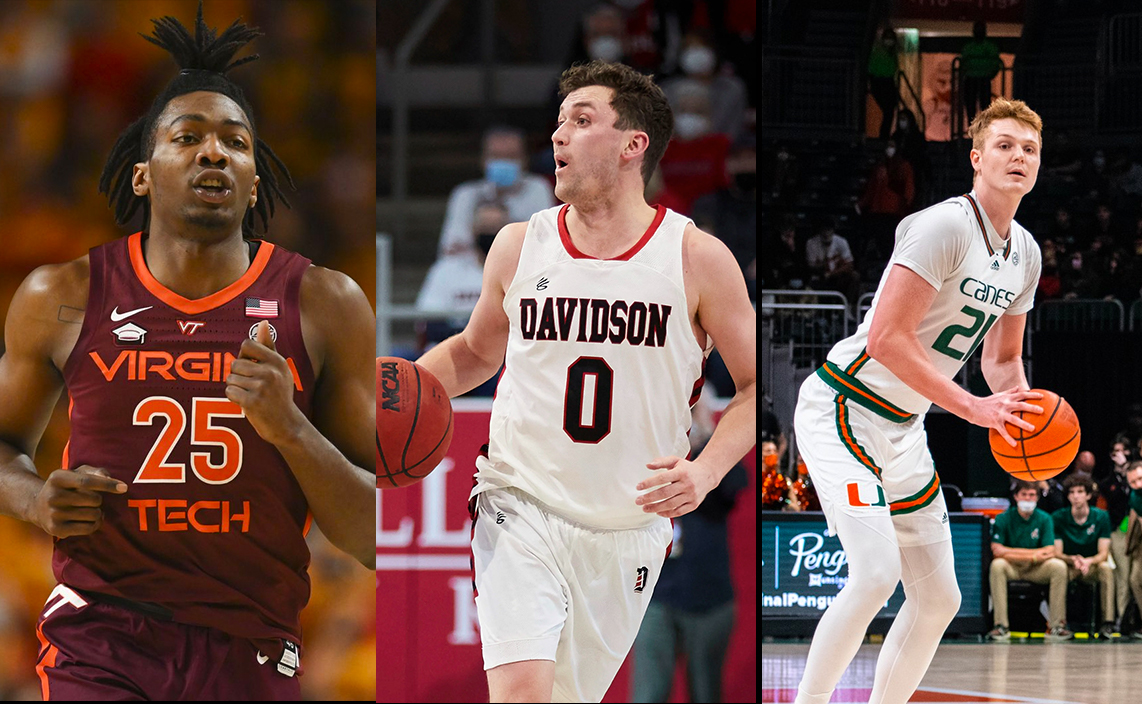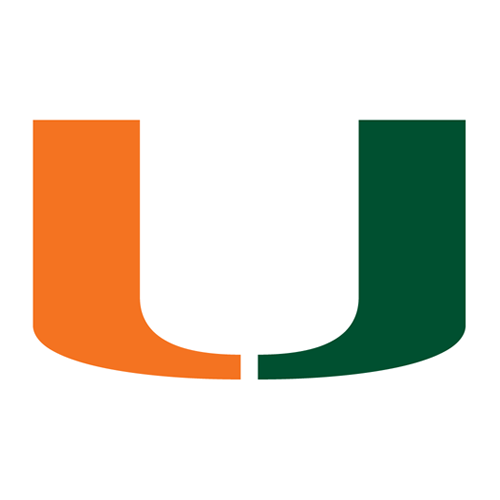Virginia Tech (11-seed)
First-round matchup vs. Texas
According to ShotQuality’s team rankings, Virginia Tech is the most under-seeded team in all of March Madness. The Hokies rank 15th in overall Adjusted Shot Quality and in the top 20 on both offense and defense. It’s not just the advanced metrics that love Virginia Tech, either; their 13-2 record in their last 15 games, including a 4-1 record against NCAA tournament teams and a 15-point win in the ACC championship game against Duke, speaks for itself.
The Hokies, in their third year under Mike Young, have finally fully adapted the former Wofford head coach’s identity. They can play tough inside thanks to the physicality of big men Keve Aluma and Justyn Mutts, but what makes Virginia Tech a terrifying tournament draw is their ability to light it up from beyond the arc.
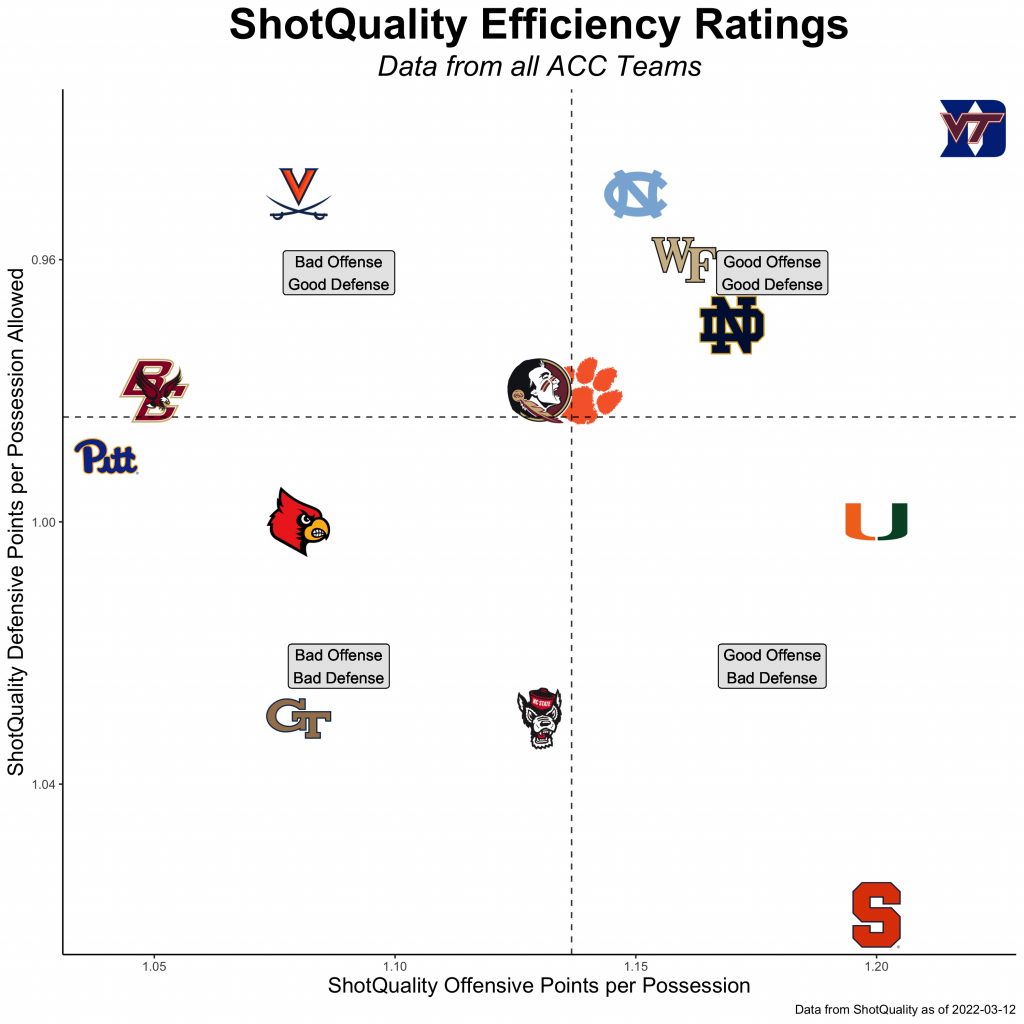
This season, they’re averaging a whopping 1.27 ShotQuality points per possession on catch-and-shoot threes and 1.15 SQ PPP on off-dribble threes — both numbers rank in the top five of the NCAA. Hunter Cattoor, Nahiem Alleyne, and Storm Murphy are all capable threats from deep shooting above 35% on over four attempts per game, and their combined pull on opposing defenses gives the Hokies the fifth-best spacing rating in the country.
Typically, teams with elite three point shooters across the board are forced to sacrifice on the other end of the floor by surrendering defensive size and length. However, for the Hokies, this hasn’t been the case. Their defense ranks 16th in the country according to ShotQuality data, and they control the three-point line on both ends of the court, holding opponents to the 20th-worst three-pointers in the NCAA.
Texas has a high-level defense across the board, and one of their greatest strengths is limiting opponent three-point shooting. However, the Longhorns really struggled down the stretch, finishing the year on a three-game losing streak and failing to crack 65 points in any of those three games.
Virginia Tech closed the season playing like one of the best teams in the country, and if the game does come down to a tough-shot-making contest, my money’s on the Hokies — who, not coincidentally, ranked in the 98th percentile in ShotQuality’s Shot Making metric (Texas finished in the 44th percentile). Mike Young’s squad will understandably be a popular upset pick.
Davidson (10-seed)
First-round matchup vs. Michigan St.
Despite facing the 7-seed Spartans as an underdog in South Carolina this week, the Davidson Wildcats actually rank a whopping 32 spots ahead of Michigan State in Adjusted Shot Quality this season. It’s not hard to see why: while the Spartans didn’t crack the top 30 in either offensive or defensive shot quality, Davidson dominated on offense, finishing the season at 12th in the nation.
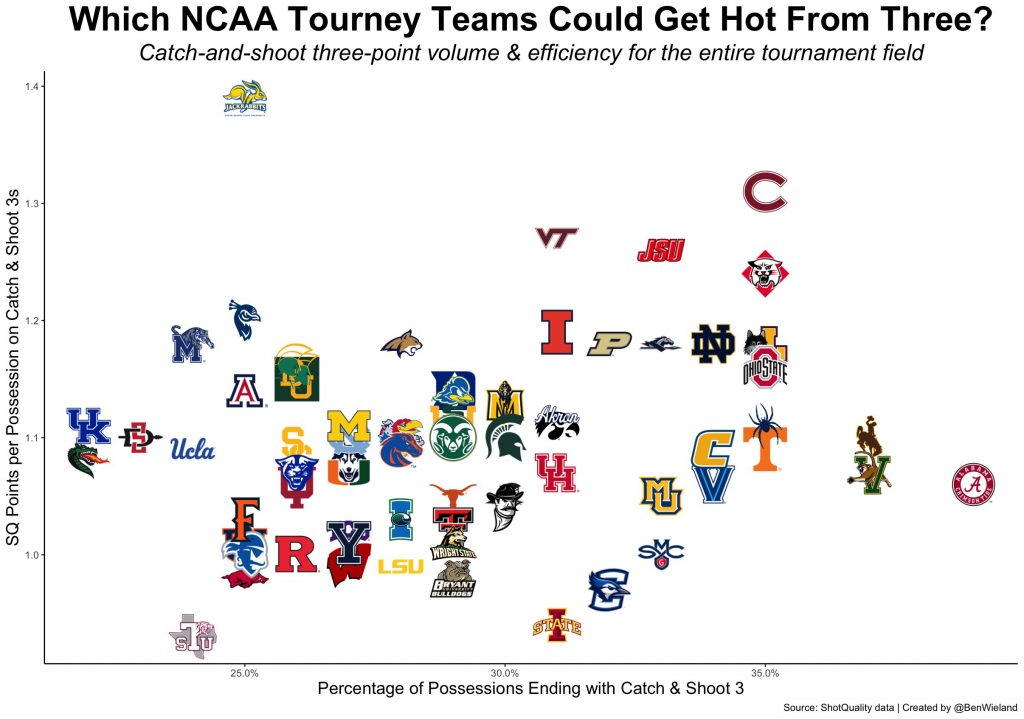
ShotQuality also graded the Wildcats as one of the hottest teams in the country heading into March Madness: though Davidson went 12-4 in their final 16 games, the ShotQuality result (assuming each team had an average shooting night) for each of their four losses was a Davidson win. In other words, if the Wildcats had average luck down the stretch, they would’ve closed the year with 16 consecutive victories.
If Davidson does pull off an upset in this matchup, it’ll be thanks to forward Hyunjung Lee, a 6’7” sharpshooter who grades out as one of the most well-rounded offensive players in the country. Lee ranks in the 97th percentile in finishing around the rim, the 95th percentile in three-point efficiency, the 94th percentile in spacing, and the 79th percentile as a passer. Compared by some scouts to Klay Thompson, Lee will pose issues for a Michigan State defense that allows more catch-and-shoot threes than 215 other NCAA teams.
Lee isn’t Davidson’s only threat, though — their offense is surprisingly well-rounded for a mid-major squad, ranking in the nation’s top 20 in SQ PPP for shots at the rim, midrange jumpers, catch-and-shoot threes, and off-dribble threes. Davidson has four players who have used over 300 possessions this season, and all four of them rank at or above the 89th percentile in SQ PPP.
Discounting Tom Izzo in March is never a great idea, and the Spartans have proven their ability to win against top teams like Wisconsin and Purdue in a way the Wildcats haven’t. Davidson’s best win this year is a one-point victory over Alabama. However, it’s easy to imagine Davidson’s well-rounded offensive attack simply overwhelming a Michigan State team that has struggled to keep pace with elite offenses all season long.
Miami (10-seed)
First-round matchup vs. USC
Did the committee just mix up their 7 and 10 seeds this season? Again, despite being an underdog against USC, Miami ranks fifteen spots ahead of their opponent in Adjusted Shot Quality.
Led by point guard and human spark plug Charlie Moore, the Hurricanes have the most efficient transition offense in the country, scoring an unreal 1.19 SQ PPP when they decide to push the pace and run. Against a USC team that allows more transition attempts than 322 other NCAA squads, they could simply open the game at a breakneck pace and force the Trojans to keep up.
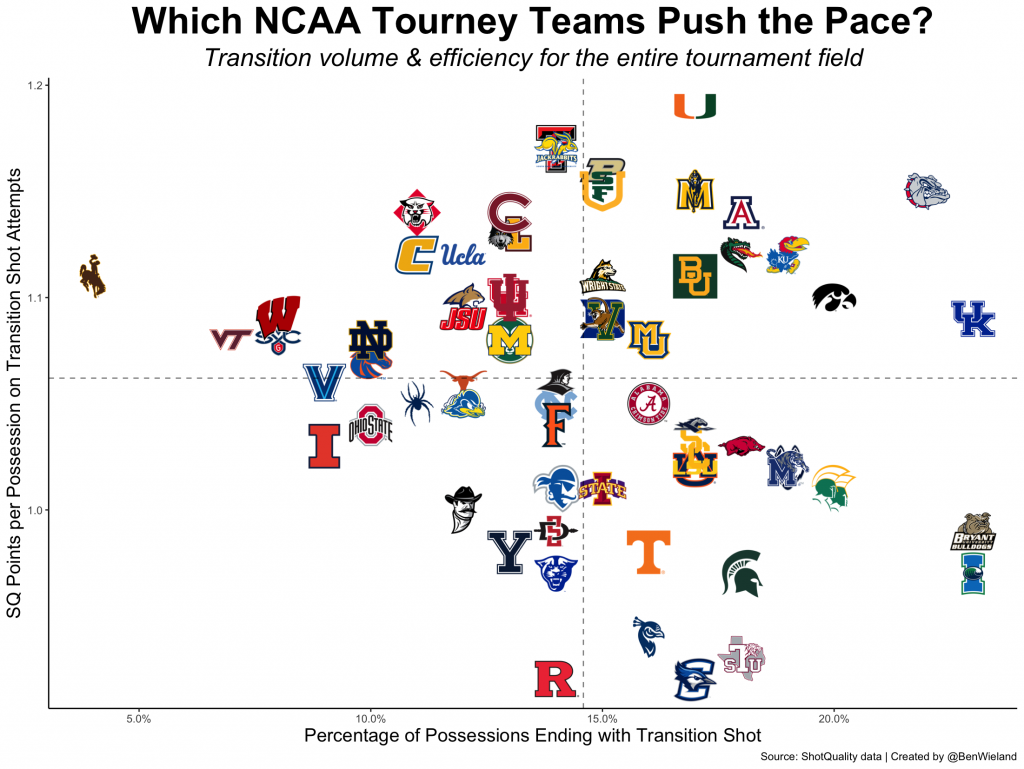
Even when the game slows down, Miami’s offense matches up well with USC’s defense. The Trojans are elite on the interior defensively, playing the second-best defense in the nation against shots at the basket. Four of their five leaders in minutes per game are 6’9” or taller, and finishing amongst the trees would certainly be a tall order for a much smaller Miami squad — if that was the way they wanted to play.
However, the Hurricanes are deeply committed to a five-out offensive system that aims to create as much space as possible for their players to get to the basket and not run into big men when they arrive. Everyone in Miami’s starting lineup can step out behind the three-point line and knock down triples — even 6’10” stretch five Sam Waardenburg, who hit 42.9% of his 84 threes this year. Miami is used to dealing with the exact challenge USC poses to their offense.
On the other end of the floor, USC has really struggled to generate reliable offense all year long, ranking just 68th in offensive adjusted shot quality. Their half-court offense scores just 0.85 SQ PPP, a paltry number that ranks just 213th in college basketball. Of their six highest-usage offensive players, just one (Isaiah Mobley) ranks in the top third of the NCAA in SQ PPP, and four players are below the 50th percentile.
USC will dominate the glass against a Miami team that really struggles to rebound, which could be enough to compensate for the gap in offensive efficiency. The Hurricanes are also prone to giving up lots of open threes, which might come back to bite them if USC can heat up from beyond the arc. However, stylistically and statistically, Miami is a solid bet to survive and advance against the Trojans.
By Ben Wieland
